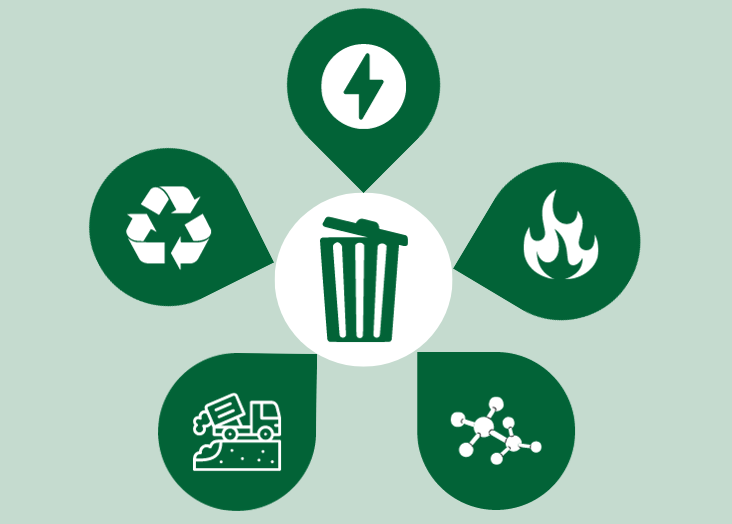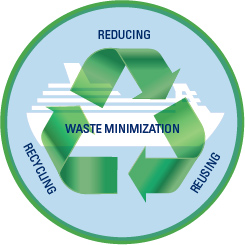Why Select Recycling Lives Services for Your Waste Monitoring Needs
Wiki Article
Exploring Various Sorts Of Waste in Modern Waste Administration Systems
The contemporary landscape of waste monitoring entails navigating a complicated array of waste types, each requiring specialized handling and disposal approaches to mitigate ecological effects. Metropolitan solid waste, hazardous waste, digital waste, and natural waste each existing unique difficulties and opportunities for source recuperation. Cutting-edge solutions such as smart waste containers and waste-to-energy technologies are becoming critical tools in boosting effectiveness and sustainability. Recognizing these waste kinds is necessary for cultivating public recognition and encouraging energetic involvement in lasting techniques. What methods can successfully attend to these varied sorts of waste while promoting a circular economy?Municipal Solid Waste
Local strong waste, usually described as house trash or rubbish, encompasses a variety of discarded products generated by domestic, business, and institutional resources within a town. This waste stream normally includes products such as packaging, food scraps, lawn trimmings, paper, plastics, fabrics, and disposed of family items. The monitoring of metropolitan strong waste is a vital part of urban planning and public health, demanding efficient collection, transportation, and disposal systems.Effective waste monitoring systems are made to minimize environmental influence while taking full advantage of source recuperation. Composting organic waste, such as food scraps and lawn trimmings, not only reduces land fill use but additionally generates important soil changes.
Communities need to also resolve the logistical and financial difficulties related to waste management. Applying pay-as-you-throw systems, improving public recognition, and purchasing modern technology can dramatically improve waste diversion prices. By integrating these techniques, municipalities can cultivate sustainable neighborhoods, decrease greenhouse gas emissions, and conserve natural resources.
Contaminated Materials

Efficient contaminated materials management includes a number of critical steps: identification, treatment, segregation, and disposal. Recognition involves the category of waste based upon its hazardous homes. Partition makes sure that dangerous products are stored separately from non-hazardous waste to stop cross-contamination. Treatment techniques, such as chemical neutralization, incineration, and stabilization, are utilized to reduce the toxicity, quantity, or wheelchair of the waste. Disposal choices, consisting of safe and secure land fills and below ground storage, are picked to guarantee lasting containment.
Regulatory structures, such as the Source Conservation and Healing Act (RCRA) in the USA, give standards and standards for dangerous waste management. Adherence to these guidelines, paired with advancements in waste therapy innovations, is necessary in mitigating the threats related to hazardous waste.
Electronic Waste
Digital waste, generally referred to as e-waste, stands for a swiftly expanding difficulty in waste monitoring systems around the world. This sort of waste encompasses discarded electronic devices and tools such as smart devices, computers, tvs, and various other digital appliances. The fast rate of technological innovation, paired with lowering product lifespans and customer need for the current gadgets, has exponentially enhanced the quantity of e-waste generated each year.E-waste is especially troublesome as a result of its complicated make-up, frequently consisting of dangerous compounds like mercury, cadmium, and lead, which position considerable environmental and health risks if not properly managed. On the other hand, e-waste likewise contains valuable products such as silver, gold, and copper, which can be recovered and recycled. The twin nature of e-waste-- both dangerous and valuable-- requires customized handling, reusing, and disposal procedures.
Effective e-waste monitoring involves stringent regulatory structures, robust collection systems, and advanced recycling technologies. Public awareness and engagement are essential, as improper disposal techniques, such as unlawful dumping and informal recycling, aggravate environmental contamination and carcinogen. Enhancing e-waste management methods is essential for alleviating ecological influence and recuperating beneficial sources in a significantly digital globe.

Organic Waste
Organic waste, making up kitchen area scraps, backyard trimmings, and agricultural residues, represents a substantial section of Website the global waste stream. This type of waste is naturally degradable, implying it can be broken down by bacteria into less complex natural compounds. Regardless of its potential for natural disintegration, improper monitoring of organic waste can bring about negative environmental impacts, including the exhaust of greenhouse gases such as methane, which add to environment change.Effective management of natural waste is essential for decreasing these environmental impacts (recycling lives services). Composting is a widely adopted approach, changing organic waste into nutrient-rich garden compost that can enhance soil health and farming performance. Furthermore, anaerobic food digestion is an arising modern technology that transforms natural waste right into biogas, a sustainable energy source, and digestate, which can be utilized as plant food
Municipalities and waste administration entities have to execute robust organic waste collection and therapy programs to optimize the advantages of these processes. Public education and learning campaigns can likewise play an essential function in encouraging families and organizations to separate organic waste from other sorts of waste. By Read More Here focusing on the administration of organic waste, cultures can decrease garbage dump use, reduced greenhouse gas exhausts, and produce beneficial results for agricultural use.

Ingenious Waste Management
In the world of waste management, cutting-edge approaches are changing exactly how societies manage their refuse, going for sustainability and efficiency. These advancements incorporate a variety of modern technologies and techniques that improve recycling prices, decrease garbage dump dependency, and lower ecological influence. One popular development is the implementation of clever waste containers geared up with sensors that check fill levels and maximize collection paths. This not only decreases gas usage yet also reduces greenhouse gas emissions.
An additional significant development is the adoption of waste-to-energy (WtE) innovations. By converting non-recyclable waste into functional energy via processes such as incineration and anaerobic digestion, WtE minimizes landfill concern and offers an eco-friendly power resource. In addition, developments in chemical recycling permit for the malfunction of complex plastics into their original monomers, making it possible for the creation of brand-new, high-quality plastic products.
Furthermore, the circular economic climate design is getting traction, stressing the design of items and systems that focus on reusability and resource effectiveness. This holistic strategy urges markets to reduce waste generation from the beginning. Through these cutting-edge techniques, modern waste monitoring systems are not just attending to the prompt challenges of waste disposal however also leading the way for an extra sustainable future.
Final Thought
A comprehensive understanding of local strong waste, dangerous waste, electronic waste, and organic waste, coupled with the application of ingenious waste management solutions, is essential for alleviating ecological impacts. Integrating innovations such as wise waste bins and waste-to-energy systems can improve efficiency and sustainability. Effective waste administration methods not just foster source healing however likewise promote public understanding and participation, inevitably adding to the growth of a circular economic climate.The contemporary landscape of waste monitoring involves navigating an intricate range of waste kinds, each needing specialized handling and disposal methods to minimize ecological effects. Municipal strong waste, dangerous waste, electronic waste, and natural waste each present distinctive challenges and opportunities for source healing.Electronic waste, frequently referred to as e-waste, represents a swiftly expanding more helpful hints difficulty in waste monitoring systems globally. Through these ingenious strategies, modern waste management systems are not just addressing the prompt challenges of waste disposal but also leading the way for an extra sustainable future.
A thorough understanding of local solid waste, dangerous waste, digital waste, and natural waste, paired with the application of innovative waste administration solutions, is essential for alleviating ecological effects. (recycling lives services)
Report this wiki page